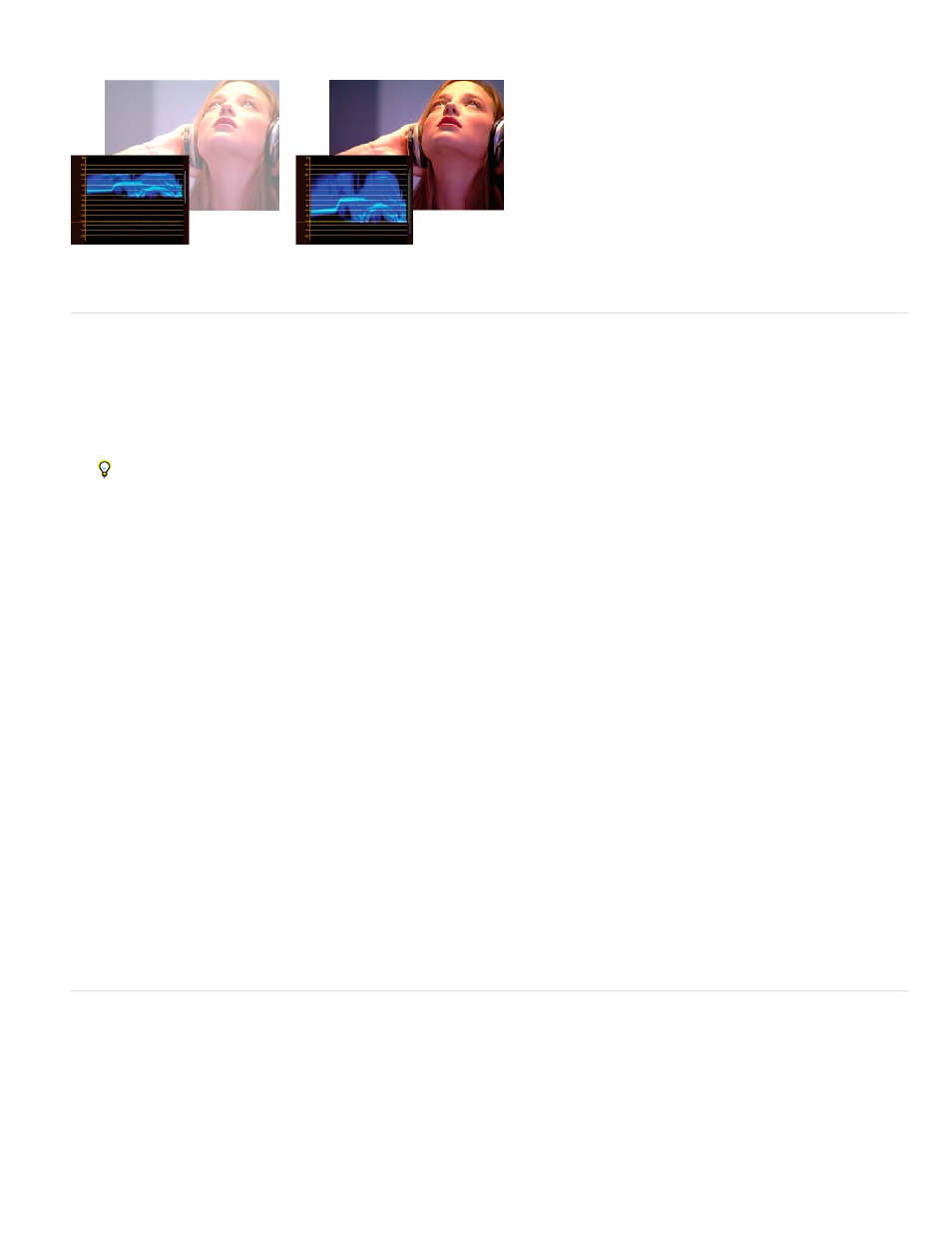Set up a color correction workspace, Apply the color correction effects – Adobe Premiere Pro CS6 User Manual
Page 355

Note:
Note:
Vectorscope
YC Waveform
YCbCr Parade
RGB Parade
All Scopes
Vect/YC Wave/YCbCr Parade
Vect/YC Wave/RGB Parade
Note:
For information about scopes, see
Correcting exposure: Overexposed image with the waveform in the upper limits of the IRE scale (left) and corrected image with the waveform
within 7.5 to 100 IRE (right)
Set up a Color Correction workspace
The following is a suggested procedure for setting up your color correction workspace. It’s meant only as a starting point so you can configure the
workspace to suit your style of working.
1. (Optional) Connect a calibrated NTSC or PAL monitor to your computer. If you’re creating video for broadcast, viewing the video on an
NTSC or PAL monitor is essential for the most accurate preview.
2. Choose Window > Workspace > Color Correction.
To see a before and after comparison of your color correction, you can either display the master clip in the Source Monitor for
comparison with the Program Monitor, or you can select the Split Screen Preview option in the Color Correction effects.
3. Make sure that the Draft Quality is not chosen in the Program Monitor menu. If possible, choose Highest Quality. If your computer
performance suffers, then choose Automatic Quality instead.
4. (Optional) Choose Reference Monitor from the Window menu. Move the Reference Monitor where you can see it and the Program Monitor
easily.
By default, the Gang To Program Monitor option is enabled in the Reference Monitor menu.
5. Choose any of the following scopes from the Reference Monitor menu:
You can also display a scope in the Program Monitor instead of the Reference Monitor.
Displays a circular chart, similar to a color wheel, that shows the video’s chrominance information. The Vectorscope is very
useful when making color adjustments.
Displays the luminance (represented as green in the waveform) and chrominance (represented as blue) values in your clip.
Displays waveforms representing levels of the luminance and color difference channels in the digital video signal. Users
comfortable with viewing YUV waveforms might consider using this scope when making color and luminance adjustments.
Displays waveforms representing the levels of the red, green, and blue channels in a clip. This graph is best for comparing the
relationship between the three channels.
Displays all scopes in one monitor.
Displays the Vectorscope, YC Waveform, and YCbCr Parade in one monitor.
Displays the Vectorscope, YC Waveform, and RGB Parade in one monitor.
Phil Hawkins offers a hands-on introduction to the color correction workspace in
Infinite Skills.
Apply the Color Correction effects
The following procedure is a general overview of applying the Color Correction effects. See the following sections in this chapter for making
adjustments using the specific controls.
1. Set up your workspace for color correction. If possible, make sure a calibrated NTSC or PAL monitor is connected to your computer.
2. Apply one of the Color Correction effects to the clip in a Timeline panel.
If the clip is already selected in a Timeline panel, you can drag the effect to the Video Effects area of the Effect Controls panel.
3. In the Effect Controls panel, expand the Color Correction effect.
351
